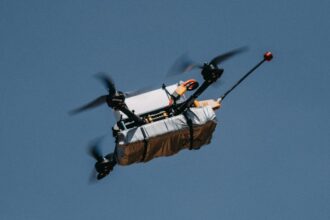The lowlands of Nevske are not suitable for massing troops, so Russia has to shift its focus to the highlands near Torske.
Day 961
On 11 October there were many new developments in the Lyman Direction.
This is where Russian forces have intensified the offensive in the Zherebets Sector, focusing on the Nevske Area, but this push triggered strong Ukrainian Counterattacks to south. Multiple failed Russian mechanized attacks have resulted, in recent days, in heavy losses. This includes the destruction of Turtle tank variants.
The recent capture of Nevske did not serve as a springboard to a southward march, but was part of a larger strategy to disrupt Ukrainian supplies by threatening the nearby Bridge.
Geographical constraints are a major factor in Russian planning. Nevske is located in the lowlands, making it difficult to mass forces. Any troop movements along the river will be exposed to Ukrainian fire.
Recognizing these limitations, Russian command has changed its focus. Instead of advancing through Nevske they plan to exploit the disruption in Ukrainian logistics by launching the main assault from the highlands.
Recent developments have highlighted significant tactical advantages for Ukrainian troops, despite Russian attempts to disrupt their logistic near Nevske. The threat of a bridge in the region is a challenge, but the intricate road network in the area allows Ukraine to maintain multiple routes for supply, preserving its flexibility.
Overextending the Russian lines is a major weakness. Russian armored vehicles must travel up 20 kilometers to attack positions, giving Ukrainian forces plenty of time to prepare and detect early. This approach leaves Russian units open to ambushes and long range strikes, which further exacerbates their logistical problems.
Ukrainian forces have been able to successfully deploy key assets at a safe depth. Drone operators and artillery, freed from logistical constraints on the frontlines, can maintain full combat effectiveness, even when they are positioned west of a river.
This capability, combined with advanced drone warfare techniques and precise artillery co-ordination, allows them to quickly and efficiently counter Russian maneuvers while maintaining a decisive advantage in response times and operational versatility.
In recent days, Russian troops have attempted to re-launch mechanized assaults against Torske. Geolocated footage shows that a T-72B3M and a T-80BV Turtle version, an APC-82A and at least one other BMP were involved in the offensive. Ukrainian forces, including the 63rd Separate Mechanized Brigades and the 60th Separate Mechanized Brigades with artillery support provided by the 40th and the 45th Brigades successfully repelled this attack, stopping the Russian advance.
During this engagement, the effectiveness of Ukrainian drone war was on full display. Reconnaissance drones detected Russian advances early, allowing FPV drone operators the ability to precisely target Russian armored cars. One of the most striking moments was the destruction of the Russian Turtle tank. Its turret was catapulted almost 75 meters in the air, which is equivalent to the height a 22-story office building.
This incident is a good example of a growing trend. Ukrainian FPV drone operators are improving their techniques to destroy these Turtle tanks on the entire frontline. This development has undermined one the most unconventional military innovations of Russia since the beginning of the war. You can find the complete uncensored footage on our Telegram channel by clicking the link in the description.
A spokesperson from a Ukrainian brigade operating in the Lyman sector stated that Russian forces had gathered armored vehicles, and bolstered their ranks with poorly-trained personnel to resume offensive operations. This lack of training contributed to the rapid and decisive failure the recent Russian offensive.
In addition to the challenges they face, Russian forces are also hampered by heavily forested terrain, such as in the Kreminna Forest, where mechanized attacks are almost impossible. This terrain plays into the hands of Ukrainian forces who are better prepared.
In recent days, Russian activities in the area have reportedly decreased. This has allowed Ukraine to intensify its pressure with attacks along forest lines. Geolocated footage captured an utterly devastating Ukrainian strike that used grenade-dropping, thermal camera-equipped drones. The attack obliterated Russian soldiers who were unable to defend themselves.
Overall, the Russian strategy to disrupt Ukrainian logistics by seizing the Nevske Bridge has limited Ukraine’s offensive capabilities in the Lyman Direction. The robust defense of Ukraine is bolstered with a flexible road system, overextended Russian supplies, and the capability to deploy key assets at a distance.
These strengths, combined with the technological superiority of drone and artillery war, allow Ukrainian forces detect, track and engage Russian units before they reach their attacking positions. Ukrainian forces also show a high level of resilience in the forests around Kreminna. These advantages, and the imminent onset of mud season, continue to show that Ukrainian forces are determined to defend this vital frontline sector.
In our daily frontline reports, we team up with the military blog Reporting from Ukraine in order to keep you updated on what’s happening on the battlefield during the Russo Ukrainian war.
Frontline report: Russian Forces take Vuhledar following a two-year siege
The Ukrainian forces successfully stopped a massive Russian attack across a canal near Chasiv Yar. This halted Moscow’s attempts to establish a vital bridgehead in Donetsk Oblast.
Read More @ euromaidanpress.com




